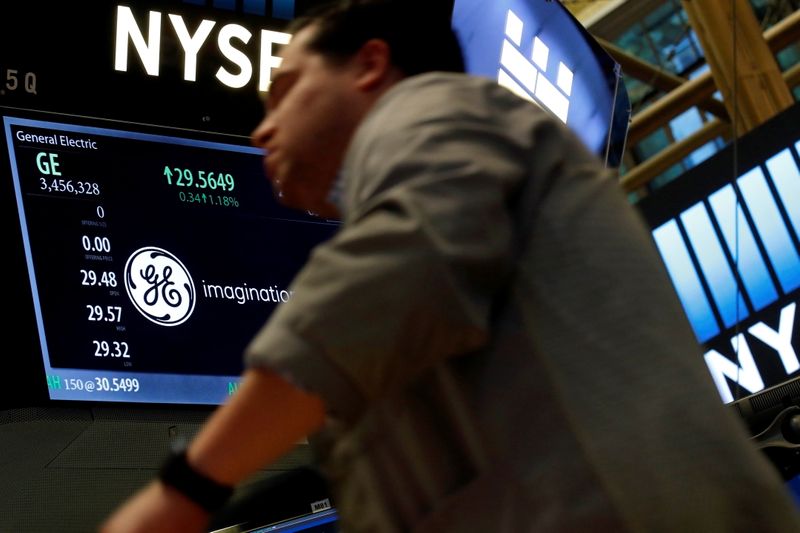U.S. CPI, Global Rate Hikes, IEA Trims Oil Forecasts – What’s Moving Markets
2022.07.13 14:36

Budrigannews.com – U.S. inflation is set to reach another 4-decade high in June, but whether that will be enough to make the Fed even more aggressive about raising interest rates isn’t clear. Data from China suggested that the infamous global supply chain bottlenecks are easing as lockdown restrictions are lifted. New Zealand and South Korea raise their key interest rates, and Canada and Chile are expected to do the same later. Delta Air Lines heralds the start of the second-quarter earnings season, and oil stabilizes after slumping below $100 on rising U.S. stockpile data. Here’s what you need to know in financial markets on Wednesday, July 13.
1. US CPI set for new high
Annual consumer inflation in the U.S. is set to hit a new four-decade high in June, with energy and shelter prices expected to have pushed the headline number up to 8.8% from 8.6% in May.
The data will likely cement expectations of another 75 basis-point increase in U.S. interest rates when the Federal Reserve meets on July 27, but limits to the pace of Fed tightening already appear to be in sight, as Kansas City Fed President Esther George – by no means an inflation dove – warned of the danger of ‘oversteering’ with rate hikes as the economy cools down.
Evidence of that cooling may come with the weekly mortgage applications at 07:00 AM ET. The CPI report follows at 08:30 AM ET.
2. Chinese exports leap, easing supply chain woes
China’s exports posted an impressive comeback in June as the lifting of lockdowns in and around Shanghai eased the bottleneck on one of the world economy’s biggest trade hubs.
Export growth accelerated to 17.9%, confounding expectations of a slowdown to only 12% and indicating that the notorious ‘supply chain constraints’ that are likely to feature in a bunch of upcoming U.S. earnings reports may actually be improving rather quickly. Fears of a return to lockdowns in Shanghai eased a little as Wednesday’s testing data showed no new cases outside quarantined areas.
There was less good news for the world economy on the other side of China’s trade balance. Import growth fell to only 1.0% on the year and has effectively stagnated for the last four months, with sharp drops in base metals imports pointing to sustained weakness in industrial output ahead.
China releases second-quarter growth figures on Friday that are expected to leave it well short of meeting the government’s 5.5% GDP growth target.
3. Stocks set to edge higher ahead of CPI; Delta earnings eyed
U.S. stock markets are set to open cautiously higher later but remain hostage to the inflation print.
By 06:15 AM ET, Dow Jones futures were up 64 points, or 0.2%, while S&P 500 futures were up 0.3% as were Nasdaq 100 futures. The three main cash indices had fallen by between 0.6% and 1.0% on Tuesday.
Stocks likely to be in focus later include Alphabet (NASDAQ:GOOGL), after The Wall Street Journal reported that its main unit Google will slow hiring for the rest of the year, and – of course – Twitter (NYSE:TWTR), which formally filed suit on Tuesday to enforce Elon Musk’s aborted takeover deal.
Fastenal (NASDAQ:FAST), Progressive (NYSE:PGR), and perhaps most interestingly, Delta Air Lines (NYSE:DAL), all report earnings.
4. Rate hikes on three continents as economic picture improves a little
Recession fears eased slightly in Europe, after Eurozone industrial output was reported to have risen a surprisingly strong 0.8% in May, while April’s increase was revised up to 0.5%. That gives the Eurozone a better chance of staying in positive growth territory for the second quarter.
The U.K., too, posted better-than-expected economic figures for May, with monthly GDP rising 0.5% thanks to strong activity in trucking, travel, and – who knew? – more appointments with GPs. Construction output was also strong.
The data remove some of the resistance to central bank interest rate rises by the Bank of England and ECB, but still gave little relief to the pound and euro. Elsewhere overnight, the central banks of South Korea and New Zealand both raised their key rates by 50 basis points, and those of Canada and Chile are expected to follow suit later.
5. Oil stabilizes as IEA sees supply-demand balance improving
The International Energy Agency said that the global oil supply crisis may be easing, although not in the way that western governments would necessarily like.
The Paris-based agency revised up its estimate for global oil supply this year by 300,000 barrels a day, chiefly due to the fact that western sanctions are not hurting Russian output as much as hoped. Russia accounted for 80% of the revision.
At the same time, the IEA trimmed its estimates for demand both this year and next, saying that high prices are starting to choke it off.
Crude had slumped on such concerns already on Tuesday to its lowest level since Russia’s invasion of Ukraine. By 06:30 AM ET, U.S. crude futures had bounced 0.5% to $96.28 a barrel, while Brent futures were up 0.4% at $99.88 a barrel.
The U.S. government releases its weekly inventories data at 10:30 AM ET, a day after the American Petroleum Institute reported the third big rise in U.S. stockpiles in four weeks.








